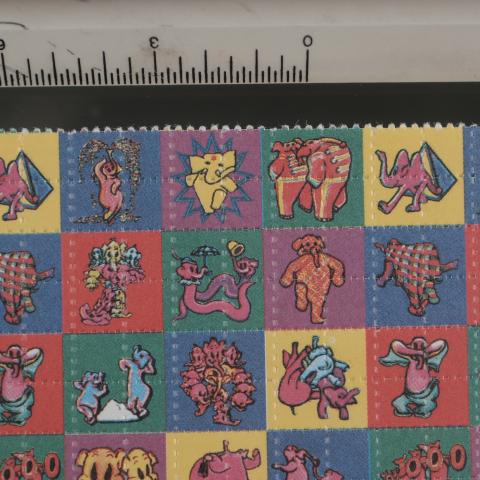|
Name: Lysergic acid
Type: Hallucinogen
AKA: LSD precursor, LSD, acid

|
|
II. Natural Derivative

|
|
III. Chemical Profile (IUPAC name)

|
|
IV. History
Lysergic acid is a precursor for LSD (lysergic acid diethylamide), first synthesized by Albert Hofmann in 1938 from ergot, a fungus that grows on rye. Ergot has been used historically in Europe for its medicinal properties. The hallucinogenic properties of LSD were discovered accidentally by Hofmann in 1943, leading to its use in psychotherapy during the 1950s and 1960s. However, widespread recreational use in the 1960s counterculture movement led to its criminalization. Despite its legal status, LSD remains a subject of scientific research for its potential therapeutic benefits.

|
|
V. Legal Information
Lysergic acid is a precursor to LSD and is strictly regulated under international drug control laws. Globally, it is controlled due to its role in the synthesis of LSD, which is classified as a Schedule I drug under the US Controlled Substances Act (CSA). Many countries follow similar restrictions, with limited legal production for scientific research only. Recent trends in some areas, such as the US, show increasing interest in decriminalizing or legalizing psychedelics for therapeutic uses, though lysergic acid itself remains largely restricted.
US Federal Schedule - III
Schedule III drugs, substances, or chemicals are defined as drugs with a moderate to low potential for physical and psychological dependence. Schedule III drugs abuse potential is less than Schedule I and Schedule II drugs but more than Schedule IV. Some examples of Schedule III drugs are: products containing less than 90 milligrams of codeine per dosage unit (Tylenol with codeine), ketamine, anabolic steroids, testosterone.
Key US Federal Policies:
Controlled Substances Act. Public Law: Public Law 91-513 (text can be found on GovInfo) (https://www.dea.gov/drug-information/csa). Date enacted: October 27, 1970.
|
|
VI. Physical Effects
Lysergic acid, a precursor to LSD, is known for its psychoactive properties. As an upper, it stimulates the central nervous system, leading to enhanced sensory perception and altered reality. Short-term effects include dilated pupils, increased heart rate, and elevated blood pressure. Long-term use may lead to persistent psychosis or hallucinogen persisting perception disorder (HPPD). Overdose is rare but possible, potentially causing severe agitation or delirium. Safe usage involves understanding individual tolerance, though regular use is generally discouraged due to psychological risks. Recent research indicates that LSD and its derivatives may have therapeutic potential for mental health conditions under controlled conditions.  |
|
VII. Psychological Effects
Lysergic acid, known as the precursor to LSD, profoundly affects perception, mood, and cognition. LSD alters serotonin receptors, leading to intense visual and auditory hallucinations. The psychological effects last 8-12 hours, with potential long-term impacts such as persistent changes in perception. Recent research is investigating LSD's use in treating depression and anxiety, alongside risks like persistent hallucinogen perception disorder (HPPD).
 |
|
VIII. Culture
Lysergic acid has deep cultural roots, particularly as the precursor to LSD, which has profoundly influenced countercultural movements since the 1960s. Indigenous peoples in Mesoamerica have used ergot-infected rye and other similar fungi for ceremonial purposes, often linked to spiritual experiences and shamanic practices. Historical documents like Albert Hofmann's accounts in the mid-20th century mark its significance in modern culture. Figures like Timothy Leary championed LSD for consciousness expansion, while its association with the hippie movement symbolized rebellion against mainstream norms. Modern proponents continue to explore its potential in psychotherapy, though it remains controversial due to legal restrictions and concerns over misuse.
 |
